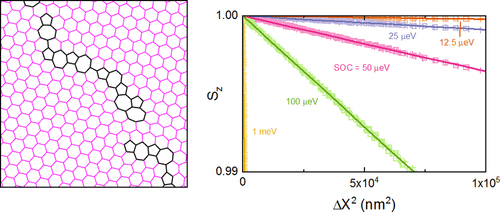Graphene is a material that has been gaining fame in recent years due to its magnificent properties. In particular, for spintronics, graphene is a valuable material because the spins of the electrons remain unaltered for unprecedented distances. However, graphene needs to be produced on a large scale in order to be used in future devices. With that respect, chemical vapour deposition (CVD) is the most promising fabrication method. CVD involves growing graphene on a metallic substrate at high temperatures. In this process, the generation of graphene starts at different points of the substrate simultaneously. This produces different single-crystal domains of graphene separated from one another through grain boundaries, consisting of arrays of five-, seven- or even eight-member carbon rings. The final product is, thus, polycrystalline graphene. A critical question for developing graphene-based spintronic technologies is to assess the impact of polycrystalline morphology with respect to the single-crystal situation. Using first-principles simulations and efficient quantum transport methodologies, the impact of grain boundaries on spin transport in polycrystalline graphene has been fully clarified.
Indeed we found that the spin diffusion length in polycrystalline graphene, supported on dielectric substrates, turns out be insensitive to the grain size but only depends on the strength of the substrate-induced spin-orbit coupling. Moreover, this is valid not only for the diffusive regime of transport, but also for the weakly localized one, in which quantum phenomena prevail. This is the first quantum mechanical simulation confirming that the same expression for spin diffusion length holds in both regimes.
Such research highlights the fact that single-domain graphene may not be a requirement for spintronics applications, and that polycrystalline CVD-grown graphene may work just as well. This puts the focus on other aspects to enhance in graphene production, such as the elimination of magnetic impurities, and should accelerate the integration of scalable graphene onto memory or spin logics technologies
Reference
